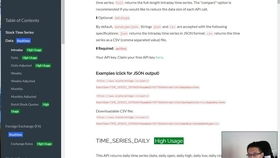Understanding the Basics of Forex Trading

Trading forex online can be a lucrative venture, but it requires a solid understanding of the market and the strategies involved. Before diving into the world of forex trading, it’s crucial to grasp the basics. The foreign exchange market, also known as forex, is where currencies are bought and sold. It’s the largest financial market in the world, with an average daily trading volume of over $6.6 trillion.
Choosing a Reliable Broker

One of the first steps in making money trading forex online is selecting a reliable broker. Your broker will act as an intermediary between you and the forex market, executing your trades. It’s essential to choose a broker that is regulated by a reputable financial authority and offers competitive spreads, low fees, and a user-friendly trading platform. Some popular forex brokers include XM, AvaTrade, and Oanda.
Developing a Trading Plan

A trading plan is a roadmap that outlines your trading strategy, risk management, and exit criteria. Without a plan, you risk making impulsive decisions that could lead to significant losses. Your trading plan should include the following elements:
-
Market analysis: Determine which markets you will trade and the timeframes you will use.
-
Entry and exit strategies: Define the conditions under which you will enter and exit trades.
-
Risk management: Set a maximum amount of capital you are willing to risk on a single trade.
-
Stop-loss and take-profit levels: Determine the points at which you will exit a trade to limit losses and secure profits.
Learning Technical and Fundamental Analysis
Successful forex traders use a combination of technical and fundamental analysis to make informed trading decisions. Technical analysis involves studying historical price and volume data to identify patterns and trends. Fundamental analysis, on the other hand, focuses on economic, social, and political factors that can impact currency values. Both approaches can provide valuable insights into market movements.
Using Leverage Wisely
Leverage allows you to control a larger position with a smaller amount of capital. While leverage can amplify your profits, it can also magnify your losses. It’s essential to use leverage wisely and only trade with capital you can afford to lose. Most forex brokers offer leverage ranging from 1:10 to 1:500, but it’s recommended to start with a lower leverage ratio, such as 1:50 or 1:100.
Practicing Risk Management
Risk management is a critical aspect of forex trading. One of the most effective risk management techniques is to use stop-loss orders. A stop-loss order is an instruction to exit a trade if the market price reaches a specified level. This helps protect your capital by limiting your potential losses. Additionally, diversifying your portfolio and avoiding over-leveraging can help mitigate risk.
Staying Informed and Disciplined
The forex market is highly dynamic, with prices constantly changing. To succeed, you need to stay informed about global economic events and news that can impact currency values. Additionally, maintaining discipline is crucial. Stick to your trading plan, avoid emotional decision-making, and don’t let losses discourage you from pursuing your trading goals.
Using Trading Tools and Resources
There are numerous trading tools and resources available to help you make money trading forex online. Some popular tools include:
-
Forex trading platforms: These platforms offer real-time market data, charting tools, and trading capabilities.
-
Technical indicators: These tools help identify trends, support and resistance levels, and potential entry and exit points.
-
News feeds: Stay updated on global economic events and news that can impact currency values.
-
Forex trading communities: Join online forums and social media groups to share ideas and learn from other traders.
Table: Popular Forex Trading Platforms
| Platform | Features | Regulation |
|---|---|---|
| MetaTrader 4 | Charting tools, technical indicators, automated trading | ASIC, CySEC, FCA |
| MetaTrader 5 |


